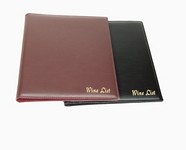Wine list pricing and BYO - what can the consumer expect?

After discovering this new Italian wine variety, “Gavi”, I thought I’d track it down in the supermarket to have a second tasting and perhaps record my tasting notes.
While there were a couple of options from different producers to choose from, I was looking for “Terre da Vino” Gavi as that what we’d drunk in the restaurant. I found it at an excellent price of five euros.
In fact, the price was so good, it highlighted the huge mark-up that our restaurant had put on the bottle. On the wine list, Terre da Vino Gavi was could be found for the princely sum of 15 euros. What’s more, the producer was not named so that it could be Gavi from anyone – in this case, you’re buying the wine style, not the producer, which is not so common in Italy. It would be like buying chianti from anyone, which would result in vastly different styles and pricing.
The price difference begs the question as to how much of a mark-up is considered good practice in Italy. My boyfriend and I had an argument about this, because he thought it was reasonable to expect that increase on a bottle costing five euros in the supermarket (which would in turn have put its own increase on the bottle).
He said it was unlikely you’d find that increase on a bottle costing 100 euros, but still we’re talking about a 200 percent increase! This is from a supermarket to a restaurant, so I’d be curious to know what the distributor prices it at.
While we will never see this in Italy, it makes a convincing argument for Australia’s BYO system here. In my opinion the Bring Your Own practice in Australia is appreciated by the locals and visitors alike, and has its place in middle range restaurants that can’t afford, or don’t provide for, an extensive wine list. I would not like to see it in more upmarket restaurants, but it is an innovative, and fascinating, aspect to the restaurant industry.
I once explained this system to a fellow student in my sommelier course, who thought it was great from a consumer’s perspective but who would balk at implementing it in his own restaurant. The debate emerged after a lesson about the role of the sommelier and the mark-up that could be expected. The argument went that a bottle of wine is not an in-house production of the restaurant, and the consumer is purchasing an extraneous product for his drinking pleasure, a practice which no restaurant should exploit.
So, here’s to Australian BYO restaurants, and the hope that they will be recognised as a legitimate dining choice, while we ask ourselves how much extra we can expect to pay, without feeling like we’ve just been the victim of a swifty by the restaurant and its wine list.
Labels: BYO, Gavi, wine lists, wine pricing


0 Comments:
Post a Comment
Subscribe to Post Comments [Atom]
<< Home